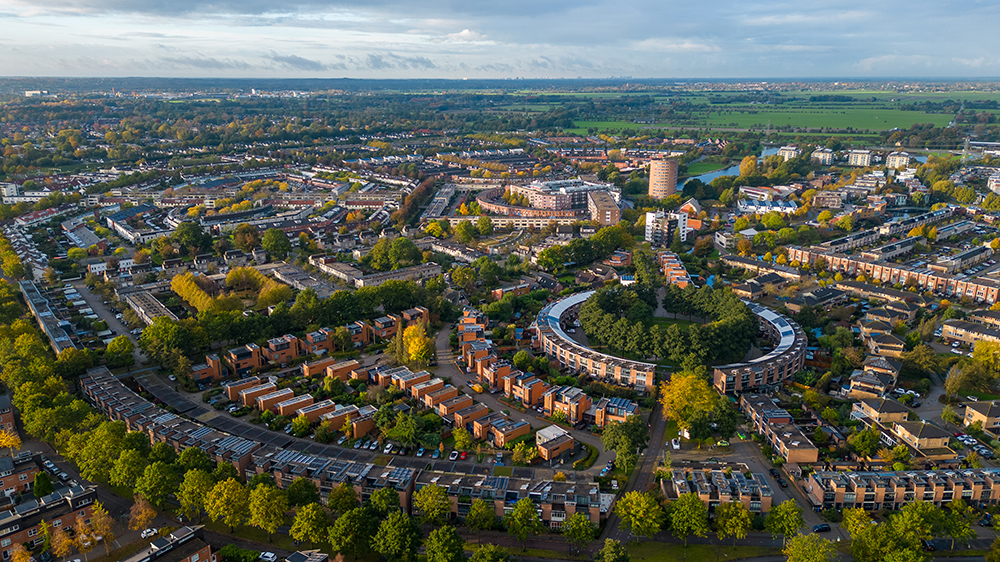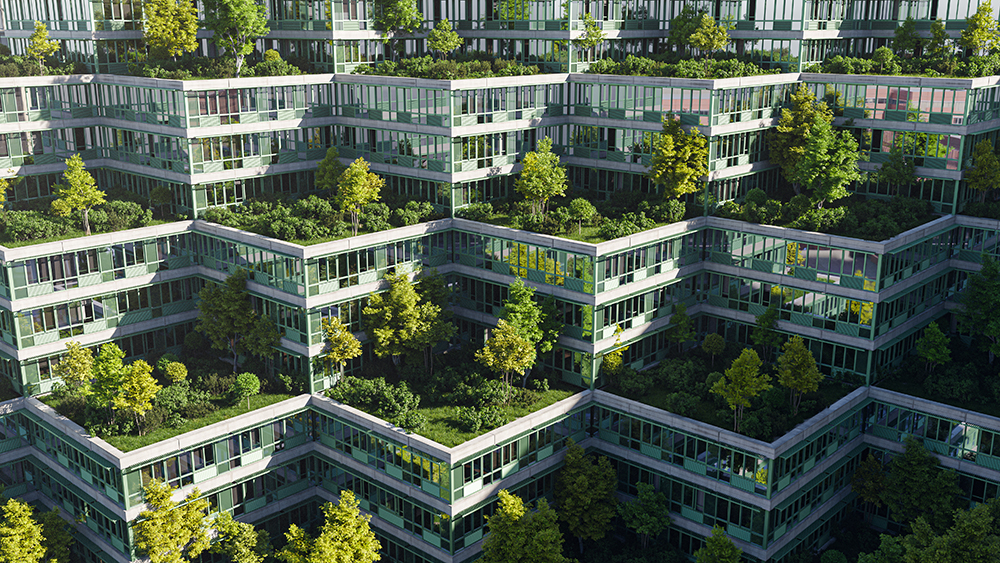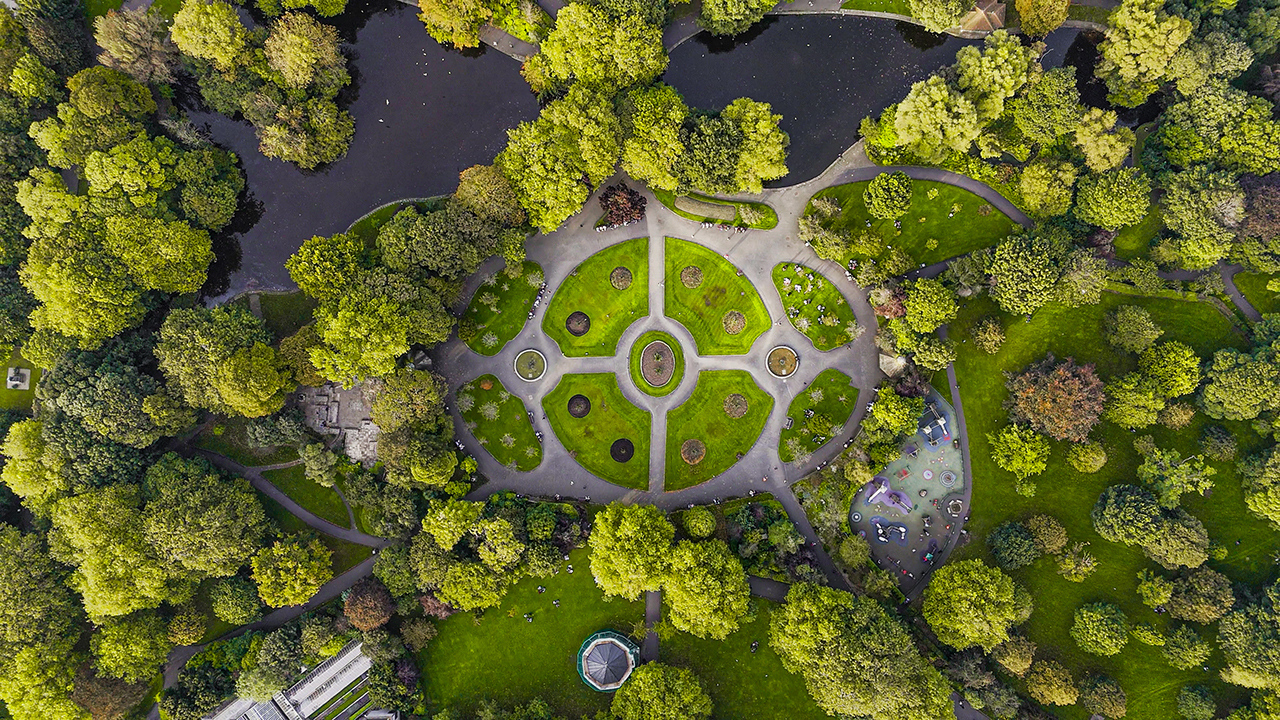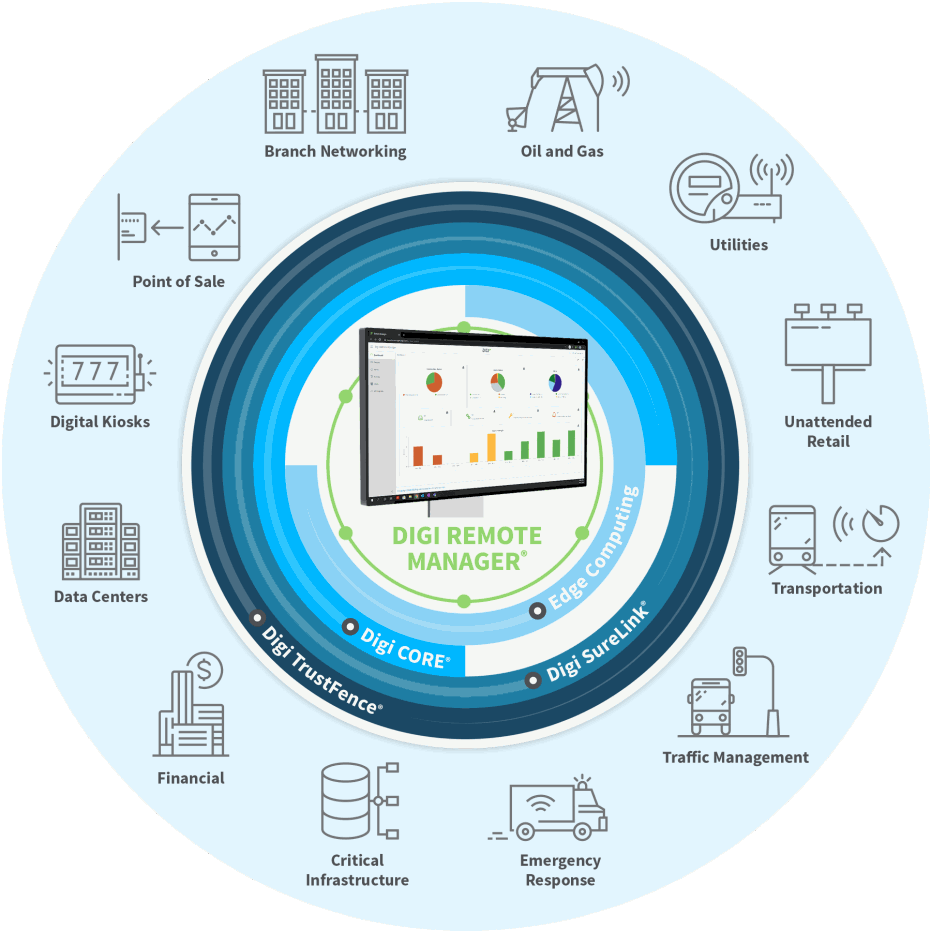The past 10 years experienced the warmest temperatures ever recorded. Cities heat up more than suburban and rural spaces, making them hotter than surrounding areas. Almost 70% of the world’s population will move to cities by 2050, which will escalate urban heat challenges. Urban heat islands pose significant risks including increased heat-related illnesses and deaths, particularly for vulnerable populations like the elderly and young children, as well as worsened air quality, higher energy consumption due to increased air conditioning needs, and the potential impact on local ecosystems and water quality.
Read on to learn how smart cooling surfaces and IoT technologies including heat sensors and wireless devices can work together to help monitor and combat urban heat.
Get Our Brief
Learn about green tech applications and solutions
Download PDF
What Is the Urban Heat Island Effect?
The urban heat island effect is the result of buildings, concrete structures and roads in city centers absorbing and holding heat more than natural areas, like parks, forests and greenspaces. Even suburban areas are less prone to heat, because there are typically far more trees, as well as lawns and parks. With their dense construction, cities become urban heat islands that tend to trap and retain heat.
Why Urban Heat Is a Problem
In the U.S., 80% of the population lives in urban areas that suffer from urban heat effects. These areas can experience temperatures of 8 degrees Fahrenheit above surrounding areas. According to the National Institute of Health, each extra degree in a heat wave increases mortality by almost 2.5%. Other notable effects of urban heat include:
- Changing weather patterns — Extreme weather, widespread flooding and years-long droughts become more common
- Decreasing air quality — Rising cooling demand creates higher levels of emissions such as ozone
- Decreased water quality — Increased water temperatures make it harder for fish to survive
- Higher energy bills — Removing excess heat from buildings causes elevated energy bills
- Strain power grids during increased cooling demand — Cooling demand in the U.S. has increased by 97% since 1972
- Unequal cooling — Too much pavement and few natural areas leads to heat-related health problems, and this effect has been demonstrated to affect low-income areas disproportionately

What Causes Urban Heat Islands?
The built environment in urban areas has more paved roadway and rooftop surfaces than outlying areas. These human-made surfaces attract and hold heat much more easily than natural surfaces. Other factors that cause urban heat islands include:
- Reduced natural landscape — Natural landscapes supply shade and natural cooling through water evaporation
- Human-made materials — Human-made materials in urban areas absorb and emit more heat than natural landscapes
- Urban layouts — Large masses of densely packed buildings block wind flow that naturally cools the air
- Waste-heat — Air conditioning, vehicles and industry all release heat into the urban environment
Why Are Some Cities Cooler Than Others?
Heat-absorbing buildings, rooftops and pavement dominate the built environment. These surfaces absorb and radiate heat far more than natural surfaces, trees, gardens and lawns. In cities that actively combat urban heat with a range of strategies, temperatures stay cooler. These cities combine cooling surfaces, strategically designed greenspaces, urban forests and IoT technologies.

How Can Cities Stay Cool?
As warmer temperatures continue, cities across the world look to keep things cooler. Cities can rethink building materials including using lighter surfaces that don't absorb heat, creating more natural spaces, and embracing smart city solutions and green technology
Cooling Down Cities with Cool Surface Technology
A typical urban surface reflects up to 20% of sunlight, absorbing the rest and heating up the surface and surroundings. Material with a more reflective coating can reflect at least 50% of sunlight. This significantly lowers temperatures. Thanks to cool surface coating technology, much less heat gets absorbed by buildings and pavement.
The Smart Services Coalition reported that an analysis of a citywide Baltimore smart surfaces project could cool the city by 5 degrees Fahrenheit. The project’s success prompted other U.S. cities to take part in a three-year program to combat urban heat. Atlanta, New Orleans, Dallas, Boston and Columbia, South Carolina signed up for the Cities for Smart Surfaces program.
Smart Surfaces That Combat Urban Heat
Smart surfaces that reduce air temperatures in cities can include natural vegetation and reflective materials. Most cities combating urban heat use a combination of these approaches.
- Cool roofs — Highly reflective paint and coatings reflect sun to reduce city temperatures and energy costs
- Reflective pavements — High-albedo material reflects sun to reduce temperatures in the city
- Green roofs — Vegetation planted on rooftops reduce city temperatures while also reducing runoff and air pollution
- Trees and gardens — Urban forests and greenways reduce air temperatures while also filter air pollutants
- Carbon sequestering concrete — This special concrete has increased reflectivity to reduce air temperatures

Green Spaces and Tree Planting
One of the most proactive steps cities can take is to go green, in as many ways as possible. This includes designing green spaces, gardens, lawns and trees into the urban plan. When citizens can travel by foot, bicycle or scooter along green coridors to get to work and other destinations, it reduces the number of vehicles creating congestion. Just as importantly, all that greenery has a cooling effect.
Many cities today are innovating around urban gardens, including vertical gardens, rooftop gardens and community gardens that help city residents to get involved in supporting a greener city.

Smarter Surfaces and Greener Spaces Around the World
Let's look at some examples of urban heat management initiatives going on in cities across the globe.
Los Angeles, California, USA
Los Angeles is the most densely populated city in the U.S., and it has an urban heat problem. Forty percent of the city is covered in heat-absorbing pavement. What if L.A. could reduce urban heat island effects by 1.7 degrees Fahrenheit by 2025? The city crafted a plan to tackle rooftops and roads by coating them in cool surfaces. The cool surfaces paving project coated 20,000 roofs. The result? The city reduced surface temperatures by almost 10 degrees Fahrenheit.
Seville, Spain
Cities across the globe find urban heat a major threat. One of the hottest cities in Europe, Seville, Spain even names its heatwaves. To reduce temperatures, the Seville mayor created a “policy of shade.” Seville planted 5,000 trees and installed awnings across the country. Along with planting trees, it also invests in cool surface construction materials. In other words, Seville taps into multiple heat adaption strategies.
Rotterdam, Netherlands
In Rotterdam, Netherlands, city officials plan to cover 10 million square feet of rooftops in vegetation to combat urban heat. Green rooftops also help absorb excess rainwater, reduce air pollution and increase biodiversity.
Medellín, Colombia
Colombia’s second-largest city, Medellín, created urban greenways along 18 roads and 12 waterways. These greenways connect parks to other parts of the city. This densely treed urban network has reduced temperatures by as much as 5.5 degrees Fahrenheit.
Trees, cool surface coatings and green roofs all offer unique heat-reducing properties. But adding IoT heat sensors supports broader climate initiatives. For example, heat sensors help track and predict temperatures over extended areas and time. Paired with AI, IoT systems can predict urban heat events and send alerts to citizens. That's one reason why we can't think about urban heat without IoT.
London, England
London ranks among the world’s smartest cities. It also experiences one of the world’s most extreme urban heat islands. For instance, the Kilburn and South Hampstead area experienced temperatures 7 degrees Celsius hotter than nearby Regents Park. The reason? Regent Park supported much more vegetation. It’s not surprising that London’s Mayor partnered with Arup on a reflective and photovoltaic panel roof retrofit project. But as a smart city, smart surface solutions must include monitoring systems, too. IoT systems use heat sensors to track and manage all manner of heat-reducing and renewable technologies remotely.
The city of London embraces IoT in innovative ways to offset climate change. For example, in Queen Elizabeth Olympic Park, a host of supporting IoT innovations rely solely on clean energy. The park features energy generating paved walkways, microclimate sensors, air quality sensors, solar-powered trash cans, EV charging stations and even smart lighting powered by renewable energy.
Using IoT to Find Urban Heat
Smart cities around the globe integrate IoT into municipal operations to track conditions. But what about urban heat? The City Scanner project at MIT deployed several types of environmental sensors on garbage trucks, including heat sensors. As garbage trucks rumble through the streets, sensors constantly check temperature and humidity changes in the surrounding area. A near real-time map of data helps operators find human-caused heat and urban heat islands within the city of Cambridge, Mass.
Measuring Surface Temperatures
There are a number of tools and technologies at work in monitoring various temperatures in heat islands. For example, an infrared thermometer or thermal camera measures surface temperatures. The infrared thermometer uses a lens to focus infrared light from the surface onto a detector. When the infrared radiation hits the detector, it gets absorbed as heat. A proportional voltage outputs to the detector, which gets transmitted as temperature data. These types of heat sensors can be combined with temperature sensors that detecting the heat levels in the air, for the most accurate view of heat islands.
Whether capturing smart roof albedo or predicting an urban heat island, it’s the IoT networks that support data gathering at the network edge, as well as edge computing and efficient data transfer. Robust, secure wireless networks designed for the harshest environments extend our ability to manage urban heat. Integrated IoT networks support everything from heat meters and heat sensor drones to handheld heat index meters and sensors embedded in pavement and light poles.
IoT networks make it possible to collect and manage data about the areas contributing to urban heat in real time. Municipalities then use this IoT data to make better decisions about mitigating urban heat. Collecting hyper-local environmental data means residents in affected areas can receive heat alerts and other proactive information.
How IoT Technology and Green Tech Support Cooler Cities
The IoT is a major contributor to initiatives to help cool down cities. This includes everything from smart city lighting that uses less energy and creates less heat than older city lighting technology, to innovations in solar, water and energy management, smart buildings, smart metering and IoT-enhanced waste management systems that optimize routing and reduce driving time of fuel-burning vehicles.
Behind all of these green tech and smart city technologies is IoT connectivity - including heat sensors and wireless communication devices such as sensor gateways, embedded communication modules and cellular routers that transmit data. Additionally, edge computing and remote monitoring and management tools enable these devices to quickly and effectively provide actionable insights. A combination of all of these approaches will help reduce urban temperatures significantly.

Work With Digi
IoT technologies sit at the heart of smart cities around the world. As urban heat islands spread, cities will need trusted IoT partners to track and manage cooling initiatives. That’s how Digi can help.
For over 35 years, Digi has designed and implemented IoT connectivity solutions across many industries. We create scalable remote cellular connectivity solutions, embedded communications solutions and infrastructure management solutions to help smart cities combat urban heat. Work with Digi. Become the smartest and coolest city in the world.
Next Steps